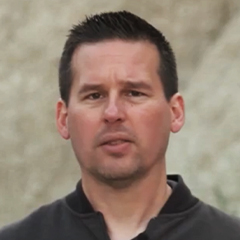
When to Use Back Button Focus for Wildlife Photography
Ian PlantDescription
Have you heard of a technique called back button focus? In this free video, world renowned outdoor photographer Ian Plant takes you on a wildlife safari in Kenya for tips on back button focus. When you are doing wildlife photography, you should use your camera’s predictive autofocus mode because this allows you to track the animal as it moves. But what if the subject doesn’t fall on one of your autofocus points? Ian solves this problem by disabling the front shutter button focus, then enabling the back button focus. Using his own camera, he shows you how this button works. Whenever you press the button, the camera will find the focus point. When you release the button, the camera will lock focus, resulting in the sharp image you were aiming to achieve.
Share tips, start a discussion or ask one of our experts or other students a question.
Already a member? Sign in
3 Responses to “When to Use Back Button Focus for Wildlife Photography”
Premium Membership
Unlock exclusive member content from our industry experts.
- 24/7 Access to Premium Photography Videos, Tips, and Techniques
- Step-by-Step Instructional Demos and Guides
- 50% Off Video Downloads Purchased in the Outdoor Photography Guide Shop
- Access to Ask the Expert Program
Unlock exclusive member content from our industry experts.
- 24/7 Access to Premium Photography Videos, Tips, and Techniques
- Step-by-Step Instructional Demos and Guides
- 2 Full-Length Video Downloads to Watch Offline
- 50% Off Video Downloads Purchased in the Outdoor Photography Guide Shop
- Access to Ask the Expert Program
Gold Membership
$463 Value
Get everything included in Premium plus exclusive Gold Membership benefits.
- 24/7 Access to Premium Photography Videos, Tips, and Techniques
- Step-by-Step Instructional Demos and Guides
- 8 Full-Length Video Downloads to Watch Offline
- 2 Full-Length Photography Classes to Keep for Life
- "How to Shoot Creatively" Educational Track
- Discounts on Purchase-to-Own Content in the Outdoor Photography Guide Shop
- Access to Ask the Expert Program
- Exclusive GOLD LIVE Streaming Events
The photo of the tree and big cat was not taken with the lense he is holding in his hand. Will simply using back button focus bring me excellent results he demonstrates in this video...? Of course not... It's seems a bit deceptive... (sigh) Until that time. . .
Since starting to use BBF some time ago, and getting used to it, I find it difficult to come up with a reason NOT to use it. Is there one?
Do I keep my thumb on the back button all the time when photographing birds in flight?